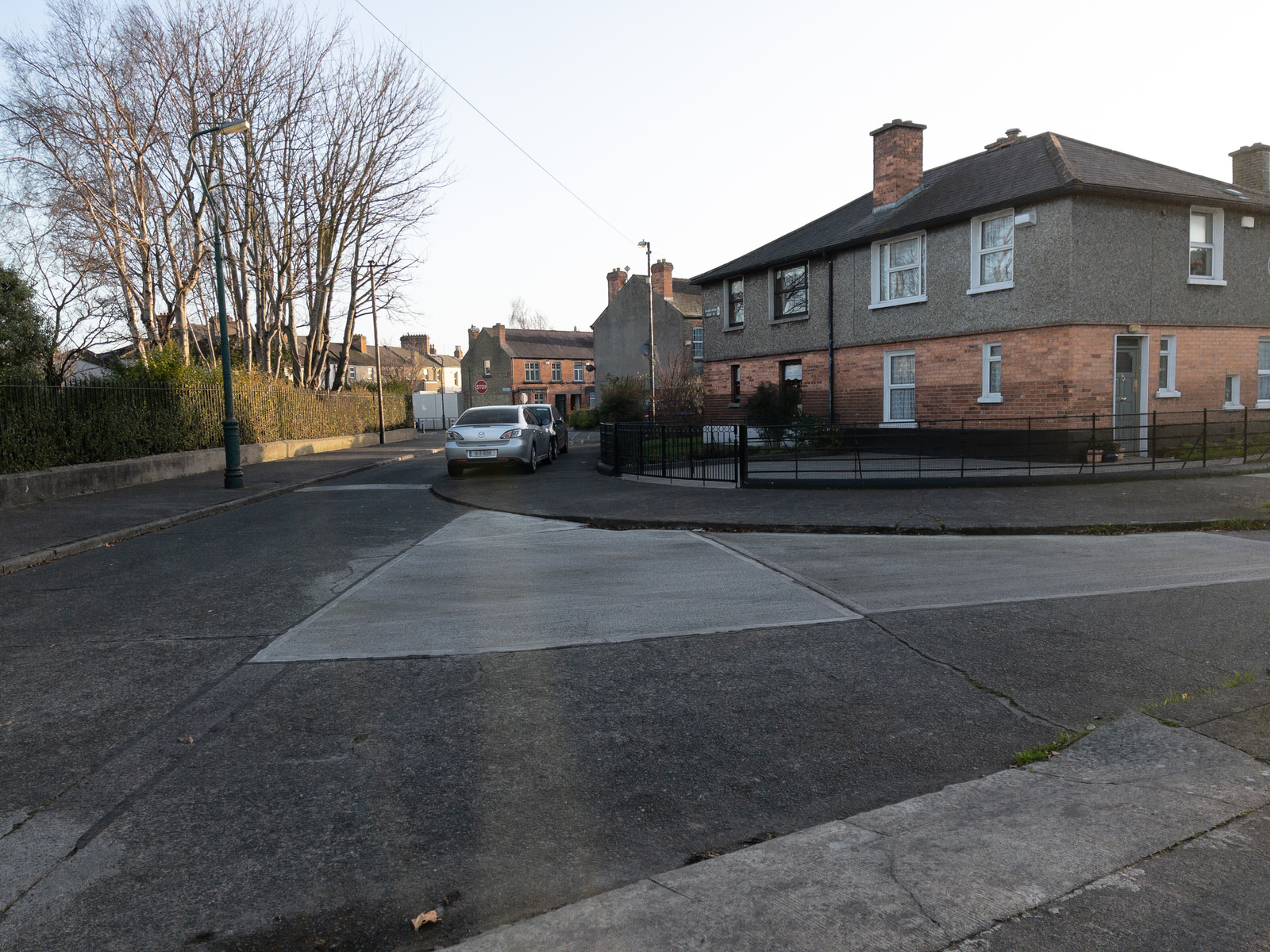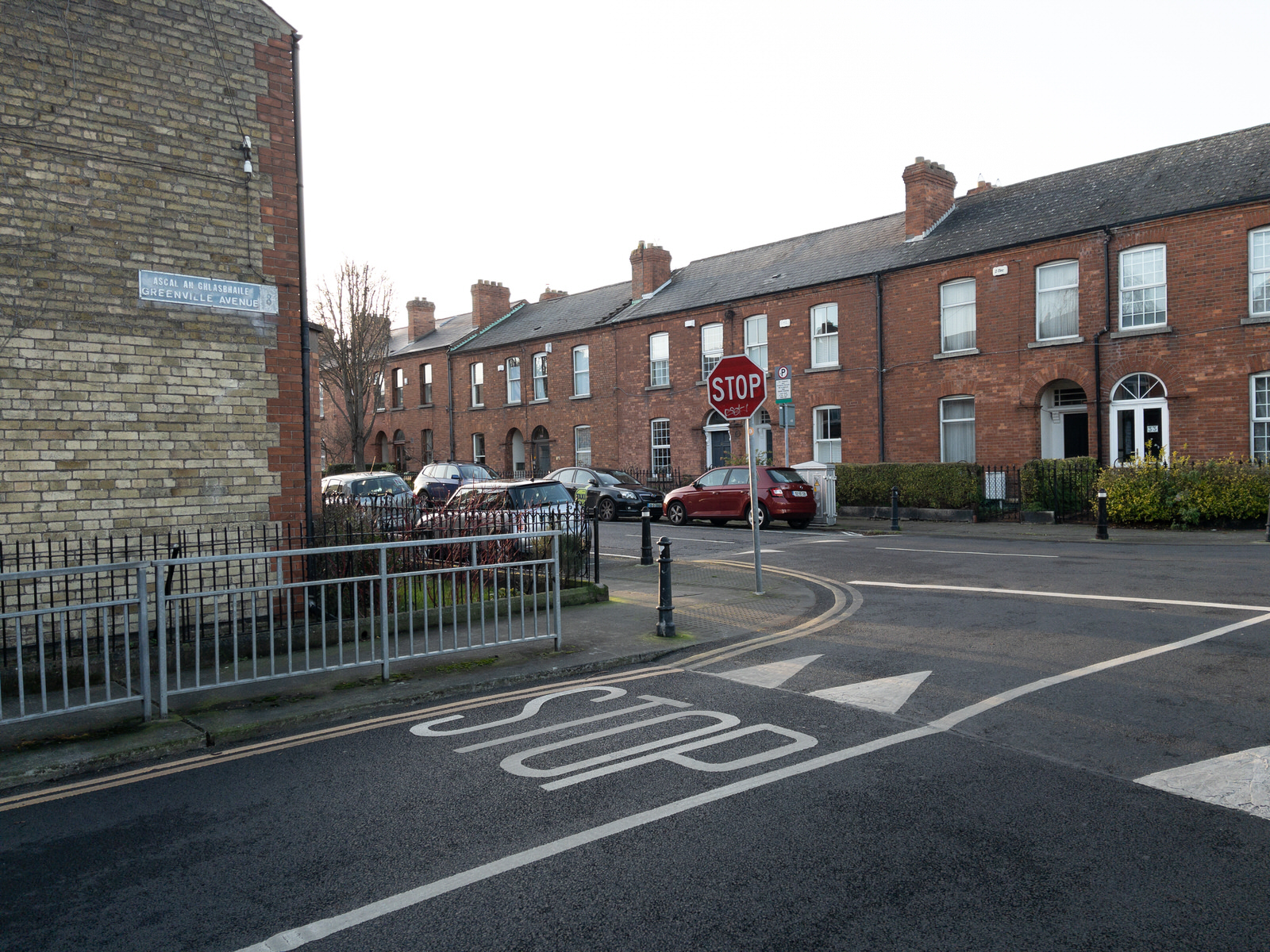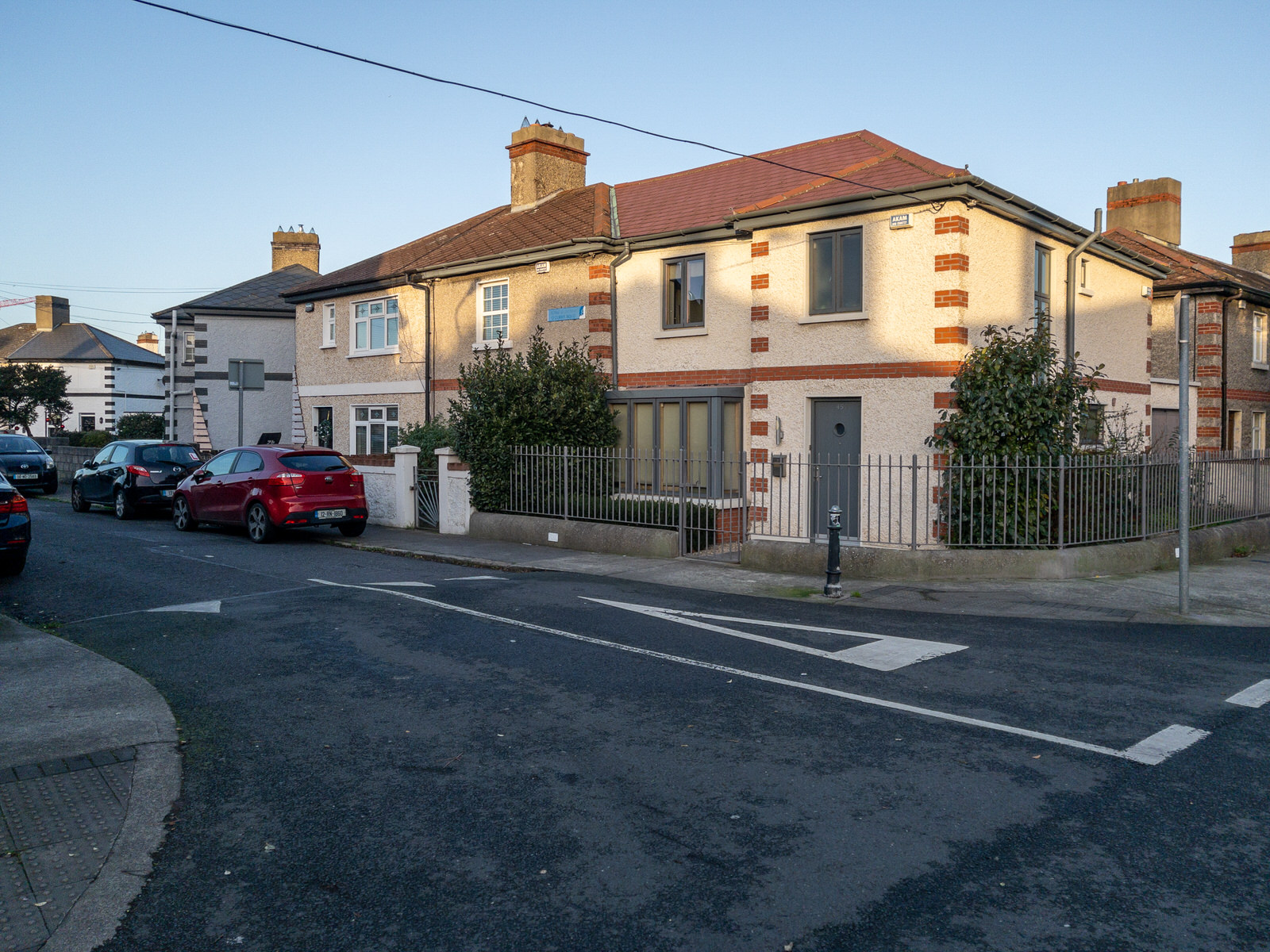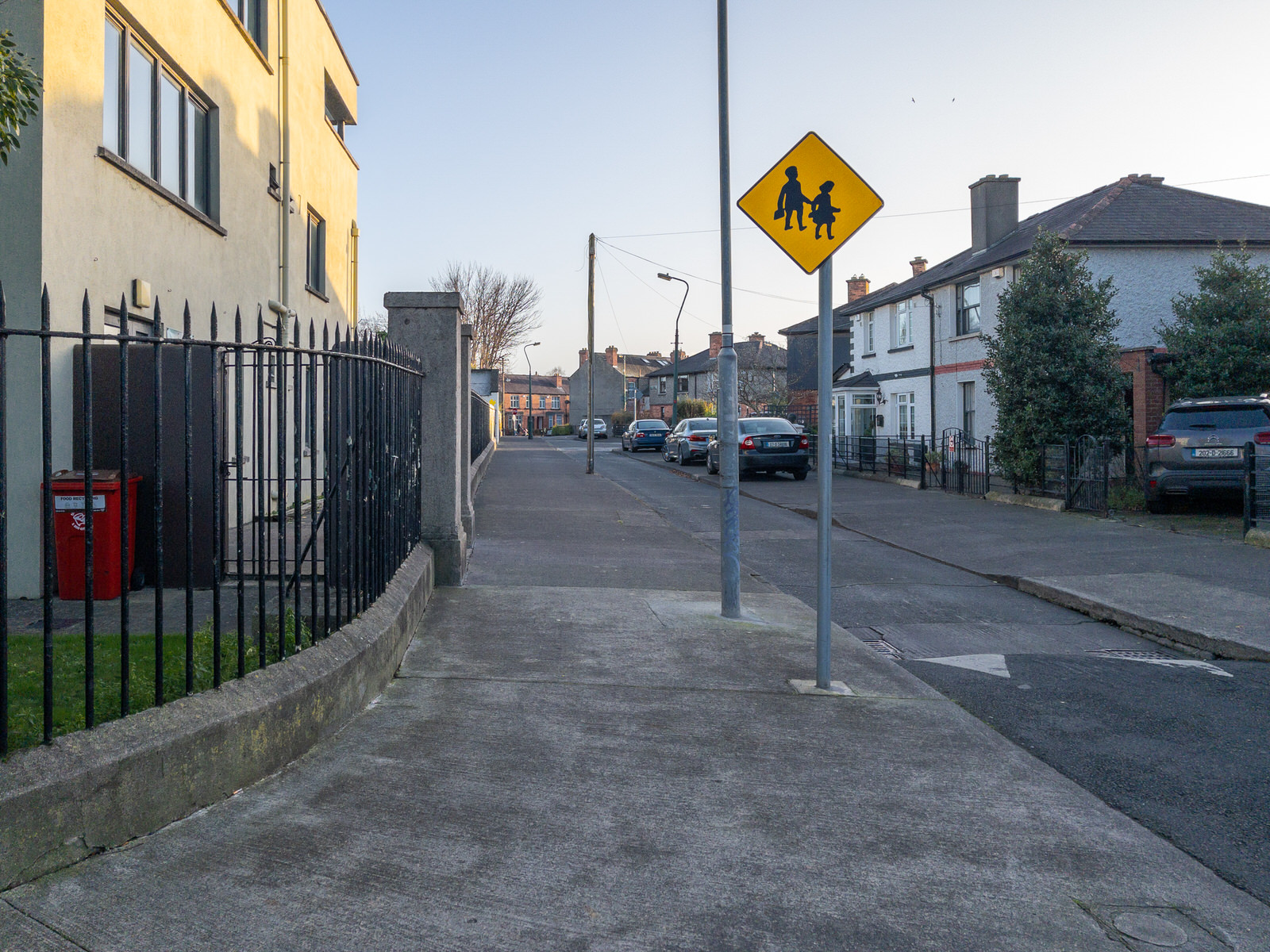THE TENTERSFAIRBROTHERS FIELDS
PETRIE ROAD AND NEARBYTENTERS AREA OF DUBLIN
I was beginning to lose sunlight so some of the images were underexposed.
George Petrie was born in Dublin, Ireland, and grew up there, living at 21 Great Charles Street, just off Mountjoy Square. He was the son of the portrait and miniature painter James Petrie, a native of Aberdeen, Scotland, who had settled in Dublin. He was interested in art from an early age. He was sent to the Dublin Society's Schools, being educated as an artist, where he won the silver medal in 1805, aged fourteen.
After an abortive trip to England in the company of Francis Danby and James Arthur O'Connor, both of whom were close friends of his, he returned to Ireland where he worked mostly producing sketches for engravings for travel books – including among others, George Newenham Wright's guides to Killarney, Wicklow and Dublin, Thomas Cromwell's Excursions through Ireland, and James Norris Brewer's Beauties of Ireland.
In the late 1820s and 1830s, Petrie significantly revitalised the Royal Irish Academy's antiquities committee. He was responsible for their acquisition of many important Irish manuscripts, including an autograph copy of the Annals of the Four Masters, as well as examples of insular metalwork, including the Cross of Cong and Roscrea Brooch. His writings on early Irish archaeology and architecture were of great significance, especially his essay on the Round Towers of Ireland, which appeared in his 1845 book titled The Ecclesiastical Architecture of Ireland. He is often called "the father of Irish archaeology". His survey of the tombs at Carrowmore still informs study of the site today.
From 1833 to 1843 he was employed by Thomas Colby and Thomas Larcom as head of the Topographical Department (the antiquities division) of the Irish Ordnance Survey. Amongst his staff were John O'Donovan, one of Ireland's greatest ever scholars, and Eugene O'Curry. A prizewinning essay submitted to the Royal Irish Academy in 1834 on Irish military architecture was never published, but his seminal essay On the History and Antiquities of Tara Hill was published by the Academy in 1839. During this period Petrie was himself the editor of two popular antiquarian magazines, the Dublin Penny Journal and, later, the Irish Penny Journal. Another major contribution of Petrie's to Irish culture was the collection of Irish traditional airs and melodies which he published in 1855 as The Petrie Collection of the Ancient Music of Ireland. The first commercial recording of Petrie's collection was The Petrie Collection of the Ancient Music of Ireland (the 1855 Edition of 147 Airs & the 1882 Edition of 40 Airs) [2007, 8-cd set, Trigon TRD 1526, 187 tracks] arranged and performed by Irish pianist J.J. Sheridan. William Stokes's contemporary biography includes detailed accounts of Petrie's working methods in his collecting of traditional music: "The song having been given, O'Curry wrote the Irish words, when Petrie's work began. The singer recommenced, stopping at a signal from him at every two or three bars of the melody to permit the writing of the notes, and often repeating the passage until it was correctly taken down ...".
As an artist, his favourite medium was watercolour which, due to the prejudices of the age, was considered inferior to oil painting. Nonetheless, he can be considered one of the finest Irish Romantic painters of his era. Some of his best work is in the collections of the National Gallery of Ireland, such as his watercolour painting Gougane Barra Lake with the Hermitage of St. Finbarr, Co. Cork (1831).
He was awarded the Royal Irish Academy's prestigious Cunningham Medal three times: firstly in 1831 for his essay on the round towers, secondly in 1834 for the essay (now lost) on Irish military architecture, and thirdly in 1839 for his essay on the antiquities of Tara Hill.
COMPLICATED JUNCTIONPETRIE - GILBERT - DUFFERIN - GREENVILLE
I had difficulty establishing that O'Donovan Road is named after John O'Donovan
John O'Donovan (25 July 1806 – 10 December 1861), from Atateemore, in the parish of Kilcolumb, County Kilkenny, and educated at Hunt's Academy, Waterford, was an Irish language scholar from Ireland.
He was the fourth son of Edmond O'Donovan and Eleanor Hoberlin of Rochestown. His early career may have been inspired by his uncle Parick O'Donovan. He worked for antiquarian James Hardiman researching state papers and traditional sources at the Public Records Office. Hardiman had secured O'Donovan a place in Maynooth College which he turned down. He also taught Irish to Thomas Larcom for a short period in 1828 and worked for Myles John O'Reilly, a collector of Irish manuscripts.
Following the death of Edward O'Reilly in August 1830, he was recruited to the Topographical Department of the first Ordnance Survey of Ireland under George Petrie in October 1830. Apart from a brief period in 1833, he worked steadily for the Survey on place-name researches until 1842, unearthing and preserving many manuscripts. After that date, O'Donovan's work with the Survey tailed off, although he was called upon from time to time to undertake place-name research on a day-to-day basis. He researched maps and manuscripts at many libraries and archives in Ireland and England, with a view to establishing the correct origin of as many of Ireland's 63,000 townland names as possible. His letters to Larcom are regarded as an important record of the ancient lore of Ireland for those counties he documented during his years of travel throughout much of Ireland.
By 1845, O'Donovan was corresponding with the younger scholar William Reeves, and much of their correspondence to 1860 survives.
O'Donovan became professor of Celtic Languages at Queen's University, Belfast, and was called to the Bar in 1847. His work on linguistics was recognised in 1848 by the Royal Irish Academy, who awarded him their prestigious Cunningham Medal. On the recommendation of Jacob Grimm, he was elected a corresponding member of the Royal Academy of Prussia in 1856.
Never in great health, he died shortly after midnight on 10 December 1861 at his residence, 36 Upper Buckingham Street, Dublin. He was buried on 13 December 1861 in Glasnevin Cemetery, where his tombstone inscription has slightly wrong dates of both birth and death.
He married Mary Anne Broughton, sister-in-law of Eugene O'Curry and was father of nine children (all but one of whom died without issue). His wife received a small state pension after his death.
O'DONOVAN ROAD THE TENTERS
I had difficulty establishing that O'Donovan Road is named after John O'Donovan
John O'Donovan (25 July 1806 – 10 December 1861), from Atateemore, in the parish of Kilcolumb, County Kilkenny, and educated at Hunt's Academy, Waterford, was an Irish language scholar from Ireland.
He was the fourth son of Edmond O'Donovan and Eleanor Hoberlin of Rochestown. His early career may have been inspired by his uncle Parick O'Donovan. He worked for antiquarian James Hardiman researching state papers and traditional sources at the Public Records Office. Hardiman had secured O'Donovan a place in Maynooth College which he turned down. He also taught Irish to Thomas Larcom for a short period in 1828 and worked for Myles John O'Reilly, a collector of Irish manuscripts.
Following the death of Edward O'Reilly in August 1830, he was recruited to the Topographical Department of the first Ordnance Survey of Ireland under George Petrie in October 1830. Apart from a brief period in 1833, he worked steadily for the Survey on place-name researches until 1842, unearthing and preserving many manuscripts. After that date, O'Donovan's work with the Survey tailed off, although he was called upon from time to time to undertake place-name research on a day-to-day basis. He researched maps and manuscripts at many libraries and archives in Ireland and England, with a view to establishing the correct origin of as many of Ireland's 63,000 townland names as possible. His letters to Larcom are regarded as an important record of the ancient lore of Ireland for those counties he documented during his years of travel throughout much of Ireland.
By 1845, O'Donovan was corresponding with the younger scholar William Reeves, and much of their correspondence to 1860 survives.
O'Donovan became professor of Celtic Languages at Queen's University, Belfast, and was called to the Bar in 1847. His work on linguistics was recognised in 1848 by the Royal Irish Academy, who awarded him their prestigious Cunningham Medal. On the recommendation of Jacob Grimm, he was elected a corresponding member of the Royal Academy of Prussia in 1856.
Never in great health, he died shortly after midnight on 10 December 1861 at his residence, 36 Upper Buckingham Street, Dublin. He was buried on 13 December 1861 in Glasnevin Cemetery, where his tombstone inscription has slightly wrong dates of both birth and death.
He married Mary Anne Broughton, sister-in-law of Eugene O'Curry and was father of nine children (all but one of whom died without issue). His wife received a small state pension after his death.
O'CURRY ROAD - O'DONOVAN ROAD JUNCTIONTHE TENTERS
O’Curry Road is named after Eugene O'Curry (20 November 1794 – 30 July 1862) was an Irish philologist and antiquary.
He was born at Doonaha, near Carrigaholt, County Clare, the son of Eoghan Ó Comhraí, a farmer, and his wife Cáit. Eoghan had spent some time as a travelling pedlar and had developed an interest in Irish folklore and music. Unusually for someone of his background, he appears to have been literate and he is known to have possessed a number of Irish manuscripts. It is likely that Eoghan was primarily responsible for his son's education.
Having spent some years working on his father's farm and as a school teacher, Eugene O'Curry moved to Limerick in c. 1824 and spent seven years working there at a mental hospital. He married Anne Broughton, daughter of John Broughton of Killaderry near Broadford, County Limerick on 3 October 1824. O'Curry was a supporter of Catholic Emancipation and in 1828 wrote a poem congratulating Daniel O'Connell on his election as an MP.
During this period O'Curry was establishing a reputation for his knowledge of the Irish language and Irish history, and, by 1834, was in correspondence with the antiquary John O'Donovan. He was employed, from 1835 to 1842, on O'Donovan's recommendation, in the topographical and historical section of the Irish Ordnance Survey. O'Donovan went on to marry O'Curry's sister-in-law, Mary Anne Broughton, in 1840. O'Curry spent much of the remainder of his life in Dublin and earned his living by translating and copying Irish manuscripts; the catalogue of Irish manuscripts in the British Museum (1849) was compiled by him for a fee of £100. O'Curry was responsible for the transcripts of Irish manuscripts from which O'Donovan edited The Annals of the Four Masters between 1848 and 1851.
In 1851 he was elected a member of the Royal Irish Academy and, on the founding of the Catholic University of Ireland in 1854, he was appointed professor of Irish history and archaeology.He worked with George Petrie on the Ancient Music of Ireland (1855). In 1852, he and O'Donovan proposed the Dictionary of the Irish Language, which was eventually begun by the Royal Irish Academy in 1913 and finally completed in 1976.
His lectures were published by the university in 1860, and give a better knowledge of Irish medieval literature than can be obtained from any other one source. Three other volumes of lectures were published posthumously, under the title On the Manners and Customs of the Ancient Irish (1873). His voluminous transcripts, notably eight huge volumes of ancient Irish law, testify to his unremitting industry. The Celtic Society, of the council of which he was a member, published two of his translations of medieval tales. He died of a heart attack, at his home in Dublin, on 30 July 1862, and was survived by two sons and two daughters. He is buried at Glasnevin cemetery, Dublin. O'Curry Road in the Tenters area of Dublin 8 is named in his honour. O'Curry GAA club on the Loop Head peninsula and O'Curry Street in Kilkee are also named after him.
THE TENTERSFAIRBROTHERS FIELDS
At times I find it difficult to decide if I should describe a street as being in The Tenters, The Liberties, The South Circular or The Coombe.
The Tenters is an area in Dublin 8 bordering the Liberties, Blackpitts, Donore Avenue and Newmarket Square. It is within a short walk to Grafton Street, St Stephen’s Green and Christ Church Cathedral.
Today there is a stone on Clarence Mangan Road which reads as follows: “This area is known as the Tenters — because linen cloth was stretched out to bleach in the sun. When the linen trade failed, the fields were used for market gardens, until this housing scheme was built.”
The area was once known as Fairbrothers Fields a housing project that was to be built in response to what was, at the time, a critical housing crisis . Plans were produced for four different schemes and the British Government promised £4 million but the 1916 Rising interrupted the project as the money was used to rebuild the City Centre of Dublin.
In April 1918 a tender was accepted for the first project at Spitalfields which is off Francis Street. The next development was St James’s Walk, also known as Colbert’s Fort, followed by Ceannt Fort near St James’s Hospital. The Fairbrothers Fields site was the last project to be undertaken.
The Fairbrothers were Quakers and the site had been used for market gardening. The Tenters, an older name for the area, comes from the earlier practice of drying linen stretched across wooden frames known as tenters.
Some of the streets in the area are listed below:
St Thomas’s Road after an abbey that had stood nearby
Oscar Square named after Oscar the son of Oisín of Na Fianna rather than Oscar Wilde
Clarence Mangan Road in honour of the poet
O’Carolan Road after the famous Irish harpist
O’Curry Road [I am guessing] Eugene O'Curry (20 November 1794 – 30 July 1862) was an Irish philologist and antiquary. O’Donovan Road,
Geoffrey Keating Road [I am guessing] Geoffrey Keating was a 17th-century historian. He was born in County Tipperary, Ireland, and is buried in Tubrid Graveyard in the parish of Ballylooby-Duhill. He became an Irish Catholic priest and a poet.
Petrie Road [I am guessing] George Petrie (1 January 1790 – 17 January 1866) was an Irish painter, musician, antiquary and archaeologist of the Victorian era who was instrumental in building the collections of the Royal Irish Academy and National Museum of Ireland.
Commercial DisclosurePLEASE NOTE THAT LINKS BELOW MAY REDIRECT YOU TO THE AMAZON LOCATION MOST LIKELY TO SHIP TO YOUR ADDRESS
You will find links to buy products from Amazon, Google and other partners. If you click on these links, you’ll find that the URL includes a small extra piece of text which identifies that the click came from my websites. This text is an affiliate code, and it means that I get a small percentage of the money you spend if you choose to buy that product, or, in some cases, other products from the site soon after. These affiliate links help pay the costs of producing my websites and ensure that the content is free to you.

Zeiss Batis 85mm f/1.8 Lens for Sony E Mount, Black
I HAVE THIS AND THE 135mm LENS
VERSATILE FULL-FRAME LENS: The powerful lens for the mirrorless full-frame system of Sony fulfills the highest requirements. Despite its compact design, the image meets the expectations of professional photographers. EXCELLENT RESOLUTION AND HIGH CONTRAST: Richly saturated and vivid colours are a must in the creation of lasting impressions. However, stray light within an optical system leads to a lightening of the image that is particularly noticeable in the shadows. This reduces image contrast, with the result that exposures lack contrast and appear faded. To avoid this, ZEISS combines various specially developed technologies to reduce the undesirable effects of stray light. ROBUST AND WEATHERPROOF METAL CONSTRUCTION: Thanks to features that are designed to keep out dust and spray water, the lens is perfectly suited for critical outdoor conditions. It is also designed for many years of intensive use. SMOOTH AND RELIABLE AUTOFOCUS: The design of the autofocus system requires an extremely accurate shifting of particular lens groups. The focusing system of ZEISS lenses is designed to ensure a robust and smooth-running autofocus mechanism with the best imaging performance.
YOU SHOULD ALSO CONSIDER THE 25mm LENS





